Growing Red Dragon Fruit might seem like an exotic endeavor reserved for tropical climates, but I’m here to tell you that with a few clever tricks and a little DIY spirit, you can cultivate this vibrant and delicious fruit right in your own backyard – or even indoors!
For centuries, the Red Dragon Fruit, also known as pitaya, has been cherished in Southeast Asia and Latin America, not only for its striking appearance but also for its refreshing taste and numerous health benefits. Imagine impressing your friends and family with a homegrown fruit that looks like it belongs in a fantasy novel! But beyond the bragging rights, growing Red Dragon Fruit offers a rewarding connection to nature and a sustainable source of healthy food.
Let’s face it, store-bought dragon fruit can be expensive and sometimes lacks the flavor punch we crave. This DIY guide will empower you to take control of your fruit supply, ensuring you have access to fresh, flavorful dragon fruit whenever you desire. I’ll share my tried-and-true methods for creating the perfect growing environment, propagating new plants, and even troubleshooting common issues. Get ready to embark on a fun and fruitful journey – let’s get growing!
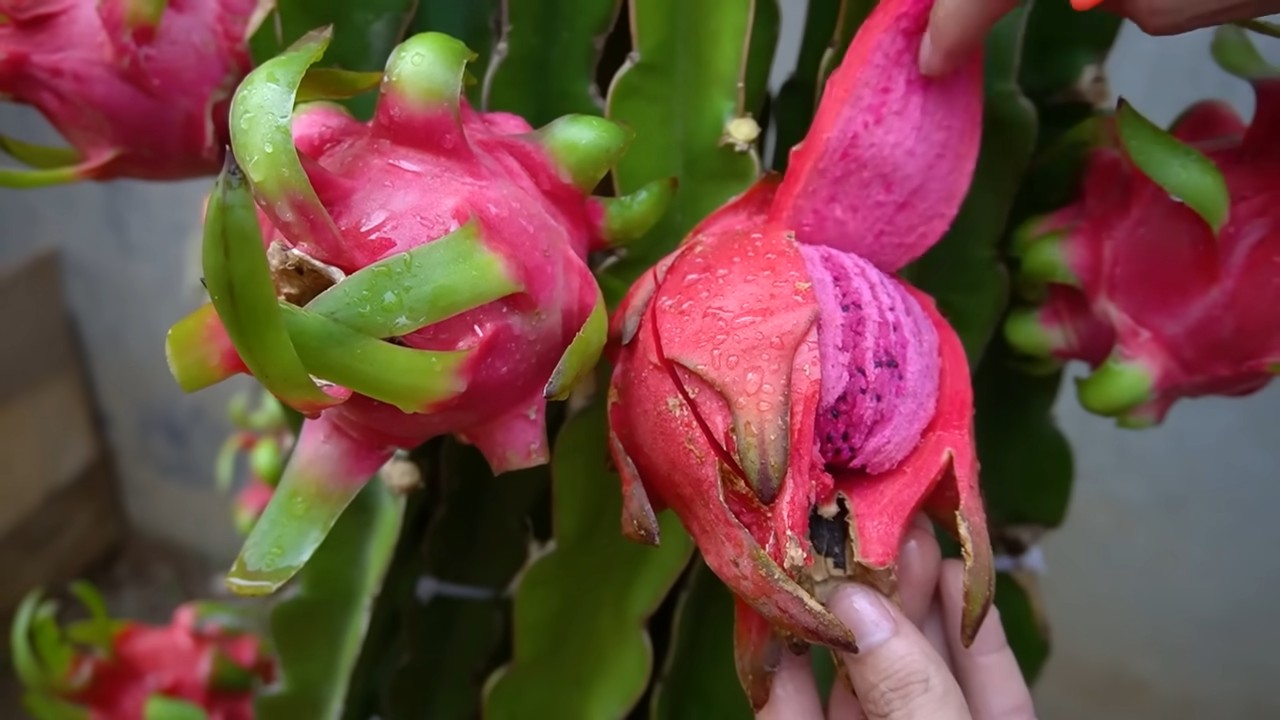
DIY: Propagating and Growing Your Own Red Dragon Fruit
Okay, so you want to grow your own Red Dragon Fruit? Awesome! It’s a rewarding experience, and trust me, nothing beats the taste of a dragon fruit you’ve nurtured yourself. It might seem intimidating at first, but with a little patience and the right guidance, you’ll be harvesting your own exotic fruit in no time. This guide will walk you through everything, from propagation to ongoing care. Let’s get started!
Choosing Your Propagation Method
There are two main ways to propagate dragon fruit: from seeds or from cuttings. While growing from seeds is possible, it’s a much longer process and the resulting fruit might not be true to the parent plant. So, for this guide, we’ll focus on propagating from cuttings, which is faster and more reliable.
* Cuttings: This is the preferred method for most home growers. You’ll get a plant that’s genetically identical to the parent, and it’ll fruit much sooner (usually within a year or two).
Sourcing Your Cuttings
Before we dive into the how-to, let’s talk about where to get your cuttings.
* Established Dragon Fruit Plant: If you know someone who already grows dragon fruit, ask if they’re willing to give you a cutting. This is the easiest and most cost-effective option.
* Local Nursery: Check your local nurseries or garden centers. They might carry dragon fruit plants or cuttings.
* Online Retailers: You can also find cuttings online from reputable sellers. Just make sure to read reviews and choose a seller with a good reputation.
Preparing Your Cuttings
Once you have your cuttings, it’s time to prepare them for planting.
1. Select Healthy Cuttings: Choose cuttings that are at least 6-12 inches long and about 1-2 inches in diameter. Look for healthy, green segments with no signs of disease or damage. Thicker cuttings are generally better as they store more energy.
2. Clean the Cuttings: Gently wash the cuttings with water to remove any dirt or debris.
3. Callus the Cuttings: This is a crucial step! Allow the cut ends of the cuttings to callus over for 7-10 days. This helps prevent rot when you plant them. Place the cuttings in a dry, shaded area with good air circulation. You’ll notice the cut ends forming a protective layer. I usually stand them upright in an empty pot.
4. Optional: Rooting Hormone: While not strictly necessary, dipping the calloused end of the cutting in rooting hormone can help speed up the rooting process. Follow the instructions on the rooting hormone package.
Planting Your Cuttings
Now for the fun part – planting!
1. Choose the Right Pot: Select a pot that’s at least 10-12 inches in diameter and has good drainage. Dragon fruit needs well-draining soil to thrive.
2. Prepare the Soil: Use a well-draining potting mix. A mix of cactus potting mix, perlite, and compost works well. I like to use a 1:1:1 ratio.
3. Plant the Cutting: Plant the calloused end of the cutting about 2-3 inches deep in the soil. Make sure the cutting is upright and stable.
4. Water Gently: Water the cutting gently after planting. Avoid overwatering, as this can lead to rot. The soil should be moist but not soggy.
5. Provide Support: Dragon fruit is a climbing cactus, so it needs support to grow. Insert a sturdy stake or trellis into the pot next to the cutting. As the plant grows, you’ll need to tie it to the support.
Caring for Your Young Dragon Fruit Plant
Congratulations! You’ve planted your dragon fruit cutting. Now, let’s talk about how to care for it.
1. Sunlight: Dragon fruit needs plenty of sunlight, at least 6-8 hours per day. Place your plant in a sunny location, such as a south-facing window or a patio. If you live in a very hot climate, provide some afternoon shade to prevent sunburn.
2. Watering: Water your dragon fruit plant when the top inch of soil feels dry to the touch. Avoid overwatering, as this can lead to root rot. Dragon fruit is drought-tolerant, so it’s better to underwater than overwater. During the winter months, reduce watering frequency.
3. Fertilizing: Fertilize your dragon fruit plant every 2-3 months during the growing season (spring and summer) with a balanced fertilizer. Look for a fertilizer with an NPK ratio of 10-10-10 or similar. Follow the instructions on the fertilizer package. You can also use organic fertilizers like compost tea or worm castings.
4. Pruning: Pruning is important for maintaining the shape and health of your dragon fruit plant. Prune away any dead or damaged segments. You can also prune to encourage branching and fruiting. The best time to prune is after the plant has finished fruiting.
5. Pest and Disease Control: Dragon fruit is generally pest-resistant, but it can be susceptible to certain pests and diseases. Watch out for pests like aphids, mealybugs, and scale. If you notice any pests, treat them with insecticidal soap or neem oil. Root rot is the most common disease, which is caused by overwatering. Prevent root rot by ensuring good drainage and avoiding overwatering.
6. Repotting: As your dragon fruit plant grows, it will eventually need to be repotted into a larger container. Repot your plant every 1-2 years, or when it becomes root-bound. Choose a pot that’s a few inches larger in diameter than the current pot.
Training Your Dragon Fruit Plant
Training your dragon fruit plant is essential for maximizing fruit production. The goal is to create a well-structured plant that can support a heavy crop of fruit.
1. Establish a Strong Central Stem: As your plant grows, focus on training one or two main stems to grow up the support structure. Remove any side shoots that emerge from the base of the plant.
2. Encourage Branching at the Top: Once the main stem reaches the top of the support structure, allow it to branch out. This will create a “weeping” effect, which is ideal for fruit production.
3. Prune for Air Circulation: Prune away any crowded or crossing branches to improve air circulation. This will help prevent fungal diseases.
4. Support the Branches: As the branches grow and produce fruit, they may become heavy and require additional support. Use twine or plant ties to support the branches and prevent them from breaking.
Pollination
Dragon fruit flowers are nocturnal, meaning they bloom at night. They are also self-pollinating, but cross-pollination can increase fruit set and size.
1. Hand-Pollination (Optional): If you want to ensure good fruit set, you can hand-pollinate your dragon fruit flowers. Use a small paintbrush to transfer pollen from the stamen (male part) to the pistil (female part) of the flower. Do this at night when the flowers are fully open.
2. Attract Pollinators: Plant flowers that attract pollinators, such as bees and moths, near your dragon fruit plant. This will help increase natural pollination.
Harvesting Your Dragon Fruit
After all your hard work, it’s finally time to harvest your dragon fruit!
1. Timing: Dragon fruit typically takes about 30-50 days to mature after flowering. The fruit is ready to harvest when it turns a bright, even color (usually red or pink, depending on the variety) and the “wings” or scales on the fruit start to dry out.
2. Harvesting: Gently twist the fruit from the stem. If it’s ripe, it should come off easily.
3. Storage: Dragon fruit can be stored in the refrigerator for up to a week.
Troubleshooting
Even with the best care, you might encounter some problems along the way. Here are a few common issues and how to address them:
* Yellowing Leaves: This could be a sign of overwatering, underwatering, or nutrient deficiency. Check the soil moisture and adjust your watering accordingly. Fertilize with a balanced fertilizer.
* Lack of Flowering: Dragon fruit needs plenty of sunlight to flower. Make sure your plant is getting at least 6-8 hours of sunlight per day. You may also need to fertilize with a fertilizer that’s higher in phosphorus.
* Fruit Rot: This is usually caused by fungal diseases. Improve air circulation by pruning away crowded branches. Avoid overhead watering.
* Pest Infestations: Treat pests with insecticidal soap or neem oil.
Overwintering Dragon Fruit
If you live in a climate with cold winters, you’ll need to protect your dragon fruit plant from frost.
1. Bring
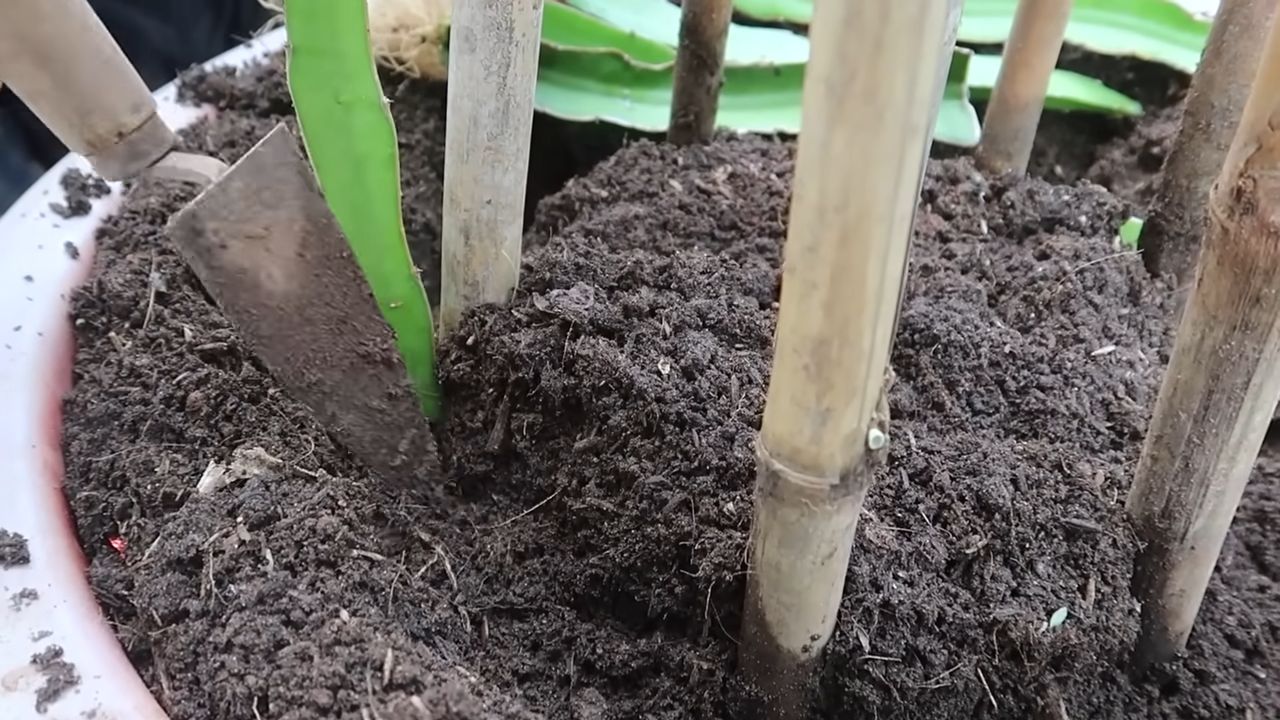
Conclusion
So, there you have it! Growing Red Dragon Fruit at home, while it might seem like an exotic endeavor, is surprisingly achievable with a little patience and the right guidance. We’ve walked you through the essential steps, from selecting the perfect cutting or seedling to providing the ideal growing conditions and ensuring proper support. But why should you embark on this journey?
Firstly, the satisfaction of harvesting your own vibrant, delicious Red Dragon Fruit is unparalleled. Imagine biting into a fruit you nurtured from a small cutting, knowing exactly where it came from and how it was grown. It’s a rewarding experience that connects you to nature and provides a healthy, homegrown treat.
Secondly, growing your own Red Dragon Fruit allows you to control the growing process, ensuring that your fruit is free from harmful pesticides and chemicals. You can opt for organic methods, providing your family with a truly healthy and natural food source. This is especially important in today’s world where knowing the origin and quality of our food is paramount.
Thirdly, Red Dragon Fruit is not only delicious but also packed with nutrients. It’s a great source of antioxidants, vitamins, and fiber, making it a healthy addition to your diet. By growing your own, you have a readily available supply of this superfood.
But the benefits don’t stop there. Growing Red Dragon Fruit can also be a beautiful and ornamental addition to your garden. The plant itself is visually striking, with its unique climbing structure and stunningly beautiful, nocturnal flowers. It’s a conversation starter and a source of pride for any gardener.
Now, let’s talk about variations. While we’ve focused on the Red Dragon Fruit, there are other varieties you can explore. Consider the yellow dragon fruit, known for its sweeter flavor, or the pink-fleshed varieties, each with its own unique taste and texture. Experiment with different varieties to find your favorite! You can also try different training methods for your dragon fruit plant. Some gardeners prefer a single trunk system, while others opt for a multi-trunk approach. Each method has its own advantages, so do some research and choose the one that best suits your needs and preferences.
Don’t be afraid to experiment with different growing mediums as well. While well-draining soil is essential, you can try adding different amendments like compost, perlite, or coco coir to see what works best for your plant. Remember to monitor your plant closely and adjust your care routine as needed.
We understand that growing Red Dragon Fruit can seem daunting at first, but we encourage you to take the plunge. Start small, be patient, and don’t be afraid to ask for help. There are many online communities and resources available to support you on your journey.
So, are you ready to embark on your Red Dragon Fruit growing adventure? We believe in you! Give it a try, and we’re confident that you’ll be rewarded with delicious, homegrown fruit and a sense of accomplishment.
We’d love to hear about your experiences! Share your photos, tips, and challenges in the comments below. Let’s create a community of Red Dragon Fruit enthusiasts and learn from each other. Happy growing!
Frequently Asked Questions (FAQ)
What is the best time of year to plant Red Dragon Fruit?
The best time to plant Red Dragon Fruit is during the spring or early summer. This allows the plant to establish itself and develop a strong root system before the cooler months arrive. In regions with mild winters, you can potentially plant year-round, but spring and early summer offer the most favorable conditions for growth. Avoid planting during periods of extreme heat or cold.
How much sunlight does Red Dragon Fruit need?
Red Dragon Fruit thrives in full sun, requiring at least 6-8 hours of direct sunlight per day. Adequate sunlight is crucial for fruit production and overall plant health. If you live in a region with intense summer heat, providing some afternoon shade can prevent sunburn on the stems and fruit. However, ensure that the plant still receives ample sunlight throughout the day.
What type of soil is best for growing Red Dragon Fruit?
Well-draining soil is essential for growing Red Dragon Fruit. The plant is susceptible to root rot if the soil remains waterlogged. A sandy loam soil with good drainage is ideal. You can improve soil drainage by adding perlite, sand, or compost to the planting mix. Avoid heavy clay soils that retain too much moisture. The ideal soil pH for Red Dragon Fruit is between 6.0 and 7.0.
How often should I water my Red Dragon Fruit plant?
Water your Red Dragon Fruit plant regularly, especially during the growing season (spring and summer). Allow the soil to dry out slightly between waterings. Overwatering can lead to root rot, so it’s important to monitor the soil moisture levels. Reduce watering frequency during the dormant season (fall and winter). The frequency of watering will also depend on your climate and the type of soil you have.
What kind of support structure does Red Dragon Fruit need?
Red Dragon Fruit is a climbing cactus and requires a sturdy support structure to grow properly. A strong trellis, post, or fence can be used. The support structure should be at least 5-6 feet tall to accommodate the plant’s growth. As the plant grows, tie the stems to the support structure to guide its growth. A circular trellis at the top of the post is ideal to allow the branches to cascade downwards, which encourages flowering and fruiting.
How long does it take for Red Dragon Fruit to produce fruit?
Red Dragon Fruit plants typically start producing fruit within 1-3 years of planting, depending on the variety and growing conditions. Plants grown from cuttings tend to fruit sooner than those grown from seeds. Proper care, including adequate sunlight, water, and fertilization, can help accelerate fruit production.
What are some common pests and diseases that affect Red Dragon Fruit?
Common pests that can affect Red Dragon Fruit include aphids, mealybugs, and scale insects. These pests can be controlled with insecticidal soap or neem oil. Root rot is a common disease that can occur if the soil is poorly drained or the plant is overwatered. To prevent root rot, ensure that the soil is well-draining and avoid overwatering. Fungal diseases can also affect Red Dragon Fruit, especially in humid climates. Use a fungicide to control fungal diseases.
How do I pollinate Red Dragon Fruit flowers?
Red Dragon Fruit flowers are nocturnal and typically open at night. While some varieties are self-pollinating, others require cross-pollination to produce fruit. If you’re growing a variety that requires cross-pollination, you’ll need to hand-pollinate the flowers. Use a small brush to transfer pollen from one flower to another. The best time to hand-pollinate is in the evening or early morning when the flowers are fully open.
How do I harvest Red Dragon Fruit?
Red Dragon Fruit is typically ready to harvest about 30-50 days after flowering. The fruit is ripe when the skin turns a bright, even color (usually red or yellow, depending on the variety) and the “wings” or bracts on the fruit start to wither. The fruit should also feel slightly soft to the touch. Use a sharp knife or pruners to cut the fruit from the stem.
Can I grow Red Dragon Fruit in a container?
Yes, Red Dragon Fruit can be grown in a container, especially in regions with colder climates where the plant needs to be moved indoors during the winter. Choose a large container with good drainage and use a well-draining potting mix. Provide a sturdy support structure for the plant to climb on. Container-grown Red Dragon Fruit may require more frequent watering and fertilization than plants grown in the ground.
How do I fertilize my Red Dragon Fruit plant?
Fertilize your Red Dragon Fruit plant regularly during the growing season (spring and summer) with a balanced fertilizer. A fertilizer with a ratio of 10-10-10 or 15-15-15 is suitable. You can also use organic fertilizers like compost or worm castings. Avoid over-fertilizing, as this can damage the plant. Reduce fertilization during the dormant season (fall and winter).
What are the health benefits of eating Red Dragon Fruit?
Red Dragon Fruit is a nutrient-rich fruit that offers several health benefits. It’s a good source of antioxidants, which help protect the body against damage from free radicals. It’s also a good source of fiber, which aids in digestion and helps regulate blood sugar levels. Red Dragon Fruit is also rich in vitamins and minerals, including vitamin C, iron, and magnesium. Some studies suggest that Red Dragon Fruit may have anti-inflammatory and immune-boosting properties.

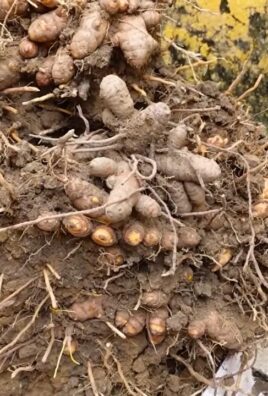
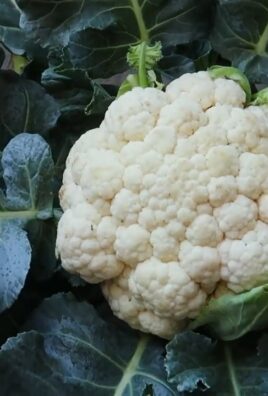
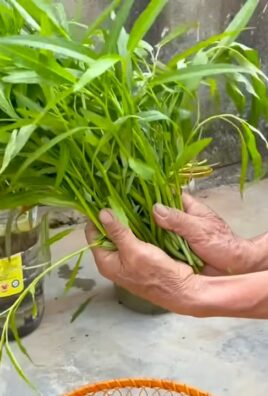
Leave a Comment